Sichuan cuisine comes out of Sichuan, has a new solution?
Sichuan cuisine comes out of Sichuan and ushers in a new solution? This article is a record of the theme salon of "2024 China Catering City Tour-chengdu railway station", which was compiled and published by Red Dining Network.
Among the eight traditional cuisines, Sichuan cuisine has the largest market and the largest number of stores in Chinese dinner.
According to the big data of red meals, as of June 2024, the number of Sichuan food stores nationwide exceeded 150,000, accounting for 11.4% of the total number of Chinese dinner stores. However, most consumers’ impressions of Sichuan cuisine are still stuck in hot pot, skewers, grilled fish and other dishes, lacking a systematic and comprehensive understanding.
How can Sichuan cuisine go to the whole country while maintaining its characteristics and charm? What role will Sichuan cuisine brand play in the future development of Chinese food? Around these two themes, on July 25th, dozens of big coffee makers gathered in the 2024 "China Catering City Tour" in chengdu railway station, which was jointly sponsored by Hongcan.com and Yangguang.com’s catering channel, and jointly hosted by Hongcan Growth Club and Juhui Catering Tune.
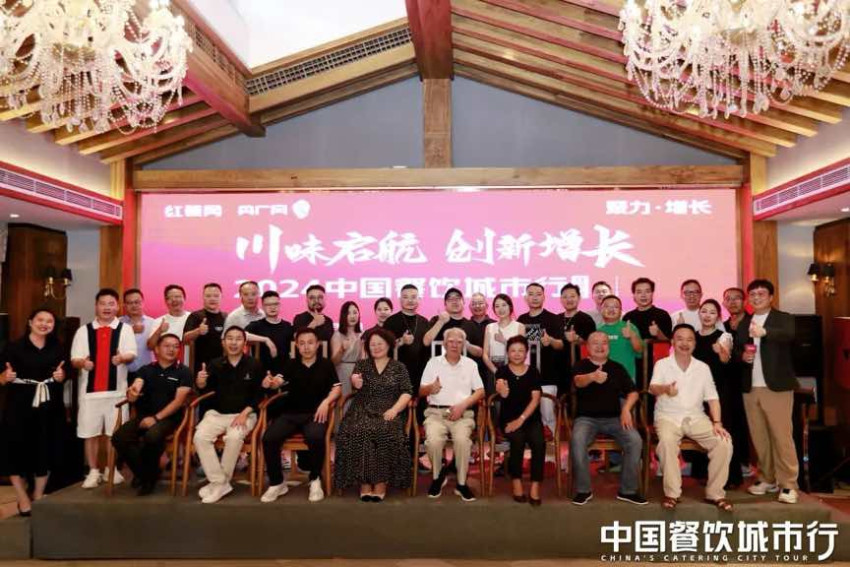
01. How to keep the characteristics and charm of Sichuan cuisine in innovation?
With the intensification of market competition, innovation has become the key for catering brands to maintain competitiveness, attract customers and achieve sustainable development. How do brands keep the characteristics and charm of Sichuan cuisine in innovation?
Sun Yan, general manager of Nantang Catering, said that Nantang Catering has been focusing on creating a Sichuan cultural restaurant that has been passed down for a hundred years, involving three orientations: low-end, mid-end and high-end.
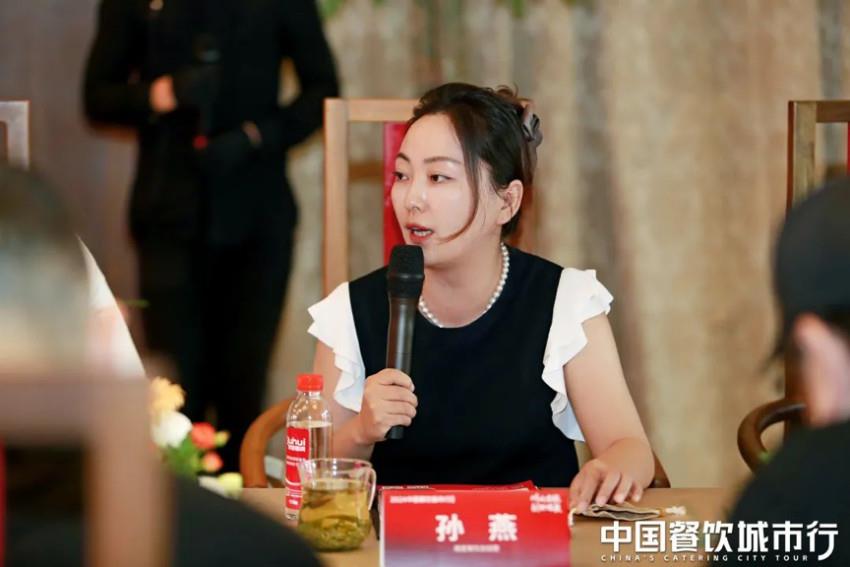
△ Sun Yan, General Manager of Nantang Catering
About how to maintain the characteristics and charm of Sichuan cuisine in innovation, Nantang Restaurant does this:
First, inheritance and innovation should coexist. In the process of R&D and innovation, Nantang Restaurant must have roots, soul and cultural tone. In Sun Yan’s view, this is the foundation of the development of cuisines. Brands should have awe in the process of product research and development, and they should know how to respect traditions in terms of seasonings, ingredients and cooking techniques.
Second, we must reject "almost unlike". Sun Yan said that the brand of Sichuan cuisine, whether returning to Sichuan cuisine, returning to the taste of Sichuan cuisine, or returning to the sense of value of the ingredients themselves, is a process of de-foaming, de-marketing, breaking the bubble and exaggerating.
In its view, Chengdu is a gourmet capital and a tourist city. Nantang Restaurant has done a lot of things with the spirit of artisans, aiming to let more people who really like Sichuan cuisine come to Chengdu to eat their favorite Sichuan food, or Sichuan food that is more in line with the taste of Sichuan food.
Third, in addition to tradition, Sun Yan believes that there are still many parts of Nantang catering that need to be learned and innovated. In its view, tradition is not behind closed doors. There are many excellent ingredients, cooking techniques, equipment, techniques, fermentation methods or food processing methods in the market, which are in line with the current market demand, customer needs, dining scenes and taste preferences. Nantang Catering will also be integrated into the popular market when making innovations.
In its view, innovation can avoid homogenization. "The homogenization of catering is very serious, and maybe 80% or 90% of restaurants eat exactly the same thing." Sun Yan bluntly said that in addition to the traditional flavor, Nantang catering has done a lot of research and development of flavor, and it has been recognized by the market, but as an old Sichuan cuisine, it always has a sense of crisis.
Fourth, when brands do research and development of dishes, they should realize that diners and consumers are the ones who ultimately pay the bill, and they cannot entertain themselves. Starting from the cultural value of the product, this cultural value can be derived from the historical or cultural background of the product itself, or from the classic famous dishes in Sichuan cuisine. By increasing cultural value, traditional dishes can be interpreted as acceptable in the market, easy to spread and more popular among consumers.
In the era of cultural self-confidence, brands should know how to grasp the story behind the product culture. At present, 60% of Nantang catering products can be traced back to the culture.
Finally, the resonance of emotional value. Sun Yan said that if a consumer goes to a restaurant and has a desire to spend again, it is because a certain product, a certain link, a certain atmosphere or an action resonates with him emotionally.
"In recent years, in the process of product research and development, we have clearly felt the charm of local ingredients, flavors and utensils. We have also enlarged these plates to make more people feel comfortable during dining." Sun Yan said.
Wu Dong, founder and chairman of Xiaolongkan Hot Pot, said that the current economic situation, Chinese food, especially hot pot, is too big, and many enterprises want to do different things and make differentiated things.Enterprises "still have to dig deep in taste and ingredients."
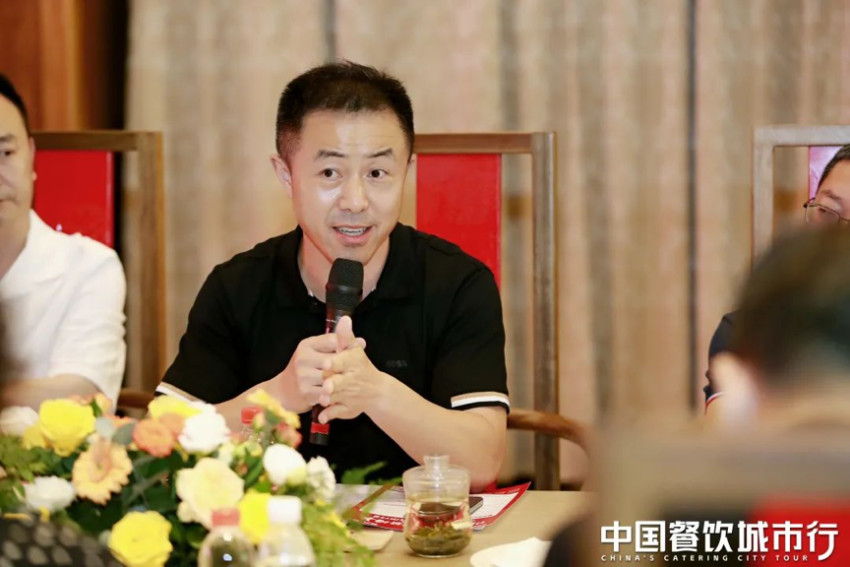
△ Wu Dong, founder and chairman of Xiaolongkan Hot Pot
Wu Dong believes that hot pot is also a branch of Sichuan cuisine, but the homogenization of hot pot is very serious. Xiaolongkan insists on constant changes. For example, last year, it launched a spicy beef pot bottom and chose pure beef as the pot bottom.
The first store of "Little Dragon Crossing the River" to be opened in Shenzhen has also undergone subversion and bold innovation in taste. For example, it is only the bottom material of the hot pot, and the way of eating is also very ceremonial.
However, Wu Dong also admitted that the cost of pot bottom in Sichuan is too high. Basically, each pot bottom will lose about 20 yuan, and cost control is a difficult problem.
Regarding the innovation of ingredients, Wu Dong emphasized that the craftsmanship of ingredients and products should be constantly pursued to the extreme, but the ingredients are not good enough, and research must be broken through in technological treatment. "If there is no good technology, even the best ingredients may be wasted."
"We should go out more, whether in Yunnan or Guizhou, to discover some rural foods and see if they can become differentiated products, so that we can have a future." Wu Dong said.
In Wu Dong’s view, the international market is the same, and the ingredients may be similar, which can be changed from the dish shape, otherwise it will be difficult. Brands should be United. If I set the table like this, you can set the table like that and make a difference in flavor. This is also an innovation, and the supply chain can be shared. Otherwise, no one can control it because of the high cost.
Liuyong, chairman of Dongmen Market, said that he has been cooking for 18 years and has been thinking about how to return to his original heart.In its view, before the industry developed too fast, everyone ran too fast, and the expectations may be too high. In fact, as long as we return to the original heart, these problems have been solved.
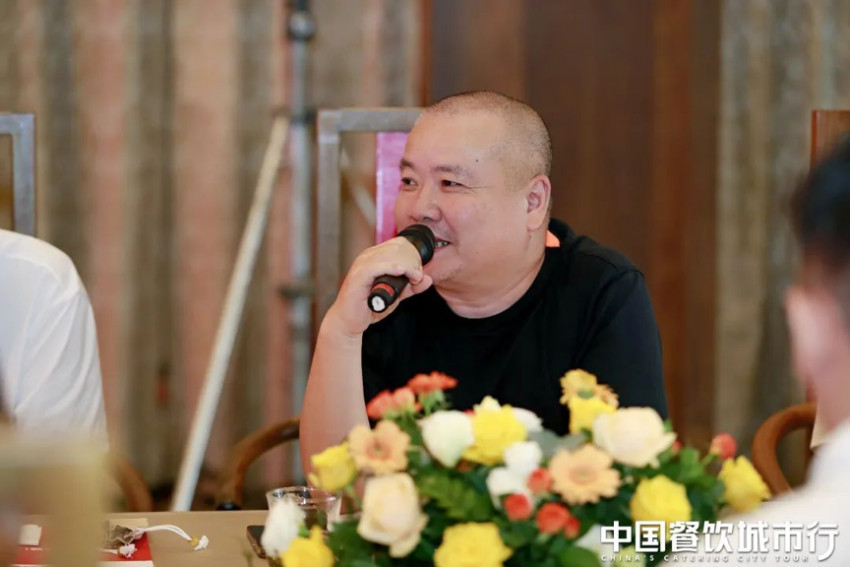
△ liuyong, Chairman of Dongmen Shijing
In his view, every entrepreneur and operator should have the mentality of treating a bad environment as a good one, so that no matter what situation they are in or at what time, it is not a big problem. These are all experiences in life and brand development. It is very important to return to the original heart.
Liuyong said that brands should continue to innovate according to their own conditions. Unlike most catering people who have been deeply involved in the same brand or track, liuyong said that he started to take a slant and take a diversified road 18 years ago. For example, the "Dongmen Town" old Chengdu Town Cultural District is an innovative project created by it. He said that when the diversified brands were laid out at the beginning, they took into account the complementarity of customers, products and ideas.
The so-called "customer complementarity" has been practiced in the past ten years when dealing with a series of difficulties such as the eight regulations and the financial crisis. In liuyong’s view, customer complementarity is also very useful in dealing with the current market environment. That is, the formation of clusters and the development of multiple formats will make consumers feel that this place is more in line with consumption and attract passengers. Based on this logic, Dongmen Market has become a cultural block integrating sinking market, tea house and market fair.
Liuyong said that they have stores in ancient towns in many blocks, including Kuanzhai Lane and Jinli. In his view, the block is very good and the flow of people is very large, but the only drawback is that the restaurants there are all single-operated, and there is no commonality.
"This is also one of the reasons why single shops on the street have become more and more annoyed in recent years." In liuyong’s view, catering people should enlarge the advantages of enterprises in the process of innovation according to the changes of the market.
It takes Damiao hotpot as an example. First, on the basis of the positioning of business banquets, the original square table is changed into a round table, which has stronger business attributes and is more liked by business guests; The second is to combine the needs of customers and learn from the setting of Chinese food to make the sense of ceremony more sufficient.
Zhao Shuyong, Chairman of Blano Western Food Company, shared his entrepreneurial experience and experience in the field of western food.After resigning from Huawei, Zhao Shuyong has only done one thing in the past 11 years-western food. At present, three brands have done relatively successfully, meeting the needs of the customer groups targeted by each brand.

△ Zhao Shuyong, Chairman of Blano Western Food
Zhao Shuyong bluntly said that as a western food brand founded in Chengdu, it is not easy to find living space in the ocean of Sichuan cuisine and hot pot, and he is also thinking about how to integrate western food with hot pot and Sichuan cuisine.
According to Zhao Shuyong, there are three major plans for western food in Blano:
First, suspend the opening of the store and optimize the model. Zhao Shuyong said that in the current market environment, Blano Western food does not have the advantage of cost performance, so it is not appropriate to open a store quickly at present. Last year, I opened 18 direct-operated stores, which is still a bit of a burden this year, so I don’t plan to open more stores.
Second, launch a new business model, and integrate the supply chain to build a Saizeriya version of the western food store, making western food around 50 yuan per capita. "I really didn’t think about doing such a low unit price before. Saizeriya lived well, and the passenger flow was four times that of us. We were forced out." Zhao Shuyong explained.
Third, go to sea. Zhao Shuyong revealed that Blano’s western food will enter the overseas market next, and it is already in the process of site selection in Singapore. Talking about how to maintain the characteristics and charm of Sichuan cuisine in innovation, Zhao Shuyong believes that authentic Sichuan cuisine should go out.
In its view, Sichuan cuisine has reached the ceiling in Chengdu. Changing a space and going overseas is a way out, and at the same time, China culture can be exported through delicious food.
"Don’t always roll in Chengdu, roll in Sichuan and Chongqing, and you have no confidence in yourself." Zhao Shuyong said. In its view, space and times are changing rapidly, and the big environment cannot be changed. Only by adapting can we find some breakthroughs.
Peng Ziyu, a national culinary master, shared his views on how to maintain the characteristics and charm of Sichuan cuisine in innovation from the perspective of a chef.

△ National cooking master Peng Zikai
He said that the reason why Sichuan cuisine can occupy 40% market share in the catering market is largely due to its characteristics of "delicious but not expensive", which is also the most important feature that Sichuan cuisine brands should retain.
Delicious, that is, to ensure Sichuan flavor. Peng Ziyu said that no matter how innovative Sichuan cuisine is, it is necessary to give the product "Sichuan flavor" and "Sichuan style" in the end. Those Sichuan restaurants that engage in fusion dishes are actually not confident enough.
"It’s not that fusion dishes can’t be cooked, but don’t play the brand of Sichuan cuisine. Since you play the name of Sichuan cuisine, you should conscientiously do a good job of Sichuan cuisine and let all the dishes be named’ Sichuan’." Peng Zikai said.
Peng Ziyu also pointed out that the soul of Sichuan cuisine is taste, which should be carried forward on the basis of tradition. As long as it is based on the extension and development of Sichuan cuisine, it has Sichuan flavor in its bones, which is also called innovation, but we must grasp the basic point of the surname "Sichuan".
The innovation of Sichuan cuisine can also be innovated in ingredients and forms, that is, the dishes are old, traditional practices and traditional tastes in new bottles, and new forms of expression can be used, such as making dishes more beautiful and creating exquisite Sichuan cuisine, but the most important thing is to maintain the unique charm of Sichuan cuisine, that is, delicious but not expensive.
In its view, the ingredients are just a carrier. No matter what ingredients are used and how novel the expressions are, as long as they are made with Sichuan style and Sichuan style cooking techniques, they are all Sichuan dishes.
"Nowadays, many restaurants put the dishes beautifully, but it can’t affect the quality and temperature of the dishes. The biggest feature of Chinese food is that it has temperature. If there is no temperature, it is not called Chinese food." Peng Zikai further emphasized.
Peng Zikai said that it is not expensive, nor does it mean that Sichuan food can’t be sold expensive. A good product can be sold at a high price with new ingredients, such as lobster and Sichuan style.
"Sichuan cuisine should be high-end, which is the market demand, but the civilian Sichuan cuisine is the most basic feature of Sichuan cuisine and can best occupy the market. Because delicious food is not expensive, everyone can afford it. " Peng Zikai said.
Wei Ming, co-founder of Xiaojungan, the fifth district of Steel Pipe Factory, also agrees with the importance of "delicious food is not expensive". Wei Ming shared the development history of the fifth district of the steel pipe factory, and described how the fifth district of the steel pipe factory sought a breakthrough around "delicious but not expensive".
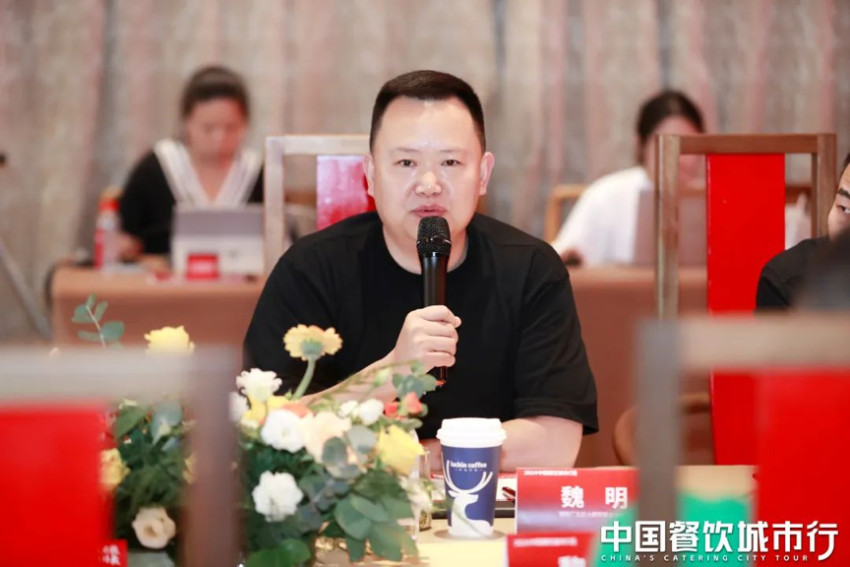
△ Wei Ming, co-founder of Xiaojungan in the fifth district of steel pipe factory
At the beginning of its establishment, the fifth district of the steel pipe factory took advantage of the social communication effect of WeChat, and guests who came to the store could enjoy a 6.8% discount as long as they forwarded their friends’ circle. Through the promotion of customers’ friends’ circle, the brand gradually became a fission.
From 2016 to 2019, the closing rate of the five districts of the steel pipe factory was very low, and almost all stores were profitable. But now, the glorious time has passed, and business is getting harder and harder.
According to its disclosure, since last year, the five districts of the steel pipe factory have undergone many adjustments. For example, in a store in Sansheng Street, Chengdu, a 20-square-meter area was opened, cold pot maocai and small bowl dishes were introduced, and the price of the products was adjusted at the same time: the bottom of the pot with string of incense was more than 30 yuan, and the bottom of the pot with string of oil and brine was as low as 8 yuan, so the price was grounded and the passenger flow was also driven. After the transformation, the store’s turnover reached 800,000 per month.
In addition, the per capita consumption of the five districts of the steel pipe factory has also dropped from 80-90 yuan to around 60 yuan. In the past, the price of large-scale dishes in the self-service area was 6.8 yuan, and now the membership price is 4.9 yuan; The price of dish area was adjusted from 39 yuan to 19 yuan.
Yan Dongsheng, the inheritor of Pei Jie’s Chongqing hot pot, said that Pei Jie is an authentic Chongqing hot pot. She has been deeply cultivated in Chongqing for 12 years and made some innovations during her pure direct operation. She went up and went down.For example, the per capita of Pei Jie’s old Chongqing hot pot shop was reduced to 85 yuan, and at the same time, the brand of "Pei Jie’s Private House Xiaoyuan" was founded, targeting the middle and high end, with per capita around 380 yuan. Adhere to high-end and cost-effective walking on two legs.
Yan Dongsheng said that many times, brand innovation kills itself, because the essence of catering is not done well. "In the past two years, many brands have been emphasizing cost performance and lowering prices. Although Pei Jie has reduced prices, the quality has not changed." Yan Dongsheng said.
As a century-old shop in Sichuan, Li Juan, general manager of Quanjude Chengdu, also agrees with the importance of innovation. Starting from "keeping integrity and innovation", it shared Quanjude’s playing style and gameplay.
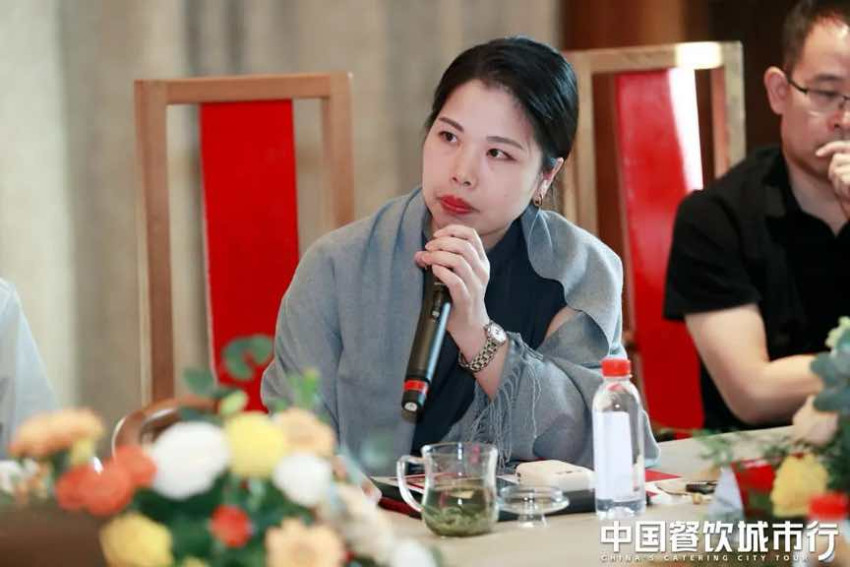
△ Li Juan, General Manager of Quanjude Chengdu
Quanjude entered Chongqing in 2006, Chengdu in 2019 and opened a second store in Chengdu in 2022. Li Juan believes that behind "innovation" is a dish, a culture, a person, a scene and a story.
For example, a dish, Quanjude makes roast duck, and "keeping the integrity" means doing a good job in the quality of roast duck. Li Juan said that Quanjude has a food base, which is different from other roast ducks.
Another example is a culture. Li Juan believes that as an old-fashioned restaurant, it not only provides food, but also conveys culture and gives customers a feeling and premium experience. She went to Nantang Pavilion before, and learned a lot about the development history of Sichuan cuisine before eating. After experiencing it, she felt that she was not just going to a restaurant to eat, but more like going to the Sichuan Cuisine Museum, which was very worthwhile. Quanjude is the same. What it wants to convey is food+culture, so that customers can eat the brand value of time-honored brands.
Another example is a person, which refers to how to pass on good services. Li Juan said frankly that the per capita consumption of Quanjude Chengdu Store is 120-150 yuan, which is almost the same as that of many hot pot restaurants. However, customers have high requirements for Quanjude, and they didn’t understand it at first. Later, they realized that in fact, in the minds of consumers, their expectations for a century-old brand are different, which is the starting point for Quanjude to talk about good culture.
Li Juan also stressed that Quanjude, as a national brand, has the responsibility to pass on the brand story and culture to the guests. For example, when the roast duck is served, it should be explained to create a sense of ceremony, which is also a kind of propriety.
Li Juan bluntly said that innovation is a long attempt for Quanjude. Quanjude is still doing live broadcast, launching bagged roast duck, and conducting product research and development around Beijing’s landmark food and hand-holding ceremony.
Li Xiaowan, co-founder of Houtang Hotpot, also believes that the foundation of innovation is "keeping the right and surprising": "right" is in front and "odd" is behind.

△ Li Xiaoyu, co-founder of Yutang Hot Pot
In its view, the homogenization of catering is serious, probably because the "positive" things have not been thoroughly done in the past, or because they have been biased by the flow in the process of innovation. In order to pursue the flow, they keep innovating, but instead throw away the really right things.
Li Xiaowa believes that in the process of innovation in Sichuan catering industry, local things, such as seasoning, culture and ingredients of Sichuan cuisine, should be well done and spread.
Take seasoning as an example. Li Xiaoyan said that everyone knows that Sichuan cuisine is very seasoned, but there are not many brands that really make the seasoning thorough and spread it out.
So is culture. In its view, culture can be extended to the whole country or even the whole world, but many Sichuan food brands have not. Li Xiaoyan said that the success of Houtang hotpot in Europe was largely due to the promotion and export of Sichuan culture by the brand.
Li Xiaoyan also stressed that "culture doesn’t mean that it doesn’t matter if you watch too much. In fact, many times, customers don’t know, and catering brands need to be promoted and spread constantly. For example,’ changing face’ is used to Chengdu people, but it is actually something that people all over the country, even people all over the world, can’t get tired of after they arrive in Chengdu. "
And ingredients. Li Xiaoyan said that Sichuan has plains, plateaus, mountains, lakes, fresh rivers and rich products, but these characteristics have not been magnified by Sichuan catering brands and done well.
"It is also an innovation when the brand takes out the’ positive’ part that customers don’t care about or customers don’t know. As a Sichuanese, they are most qualified to extract these things and tell consumers all over the country and even the world. " Li Xiaoyan said.
In addition to "positive", Li Xiaowa believes that "odd" is more about a new interpretation of original traditional things in a way that modern young people like. Take Yunnan-Guizhou Sichuan cuisine brands "Ameigo Meiguo" and "yeego Wild Fruit" as examples. In its view, these two brands can catch fire in East China, and the innovation lies in using the original dishes, setting the dishes by Michelin, and performing a new interpretation of the original traditional things in a way that modern young people like, so as to achieve value for money.
"Don’t innovate for the sake of innovation. Innovation must be done on the basis of the inherent category value by meeting the needs of consumers in different tastes, different groups and different scenarios. " Li Xiaoyan stressed.
Liu Qiang, founder of Tan Sanniang’s fresh-cut beef buffet hot pot, stressed that in the process of brand innovation, the classic taste of Sichuan cuisine should be maintained, and at the same time, the market should be changed, but the business model should be changed instead of the taste.

△ Tan Sanniang Liu Qiang, founder of fresh-cut beef buffet hot pot
In its view, the brand must not reduce the quality, but appropriately reduce the per capita consumption on the premise of ensuring the quality. Liu Qiang said that in the past year (May last year to June this year), Tan Sanniang signed 400 stores, and as of July 22, 40 new stores were signed. The reason why Tan Sanniang was able to expand rapidly was "sincerity" and "altruism".
Gan Le, general manager of Ganshiji Restaurant, took his own brand as an example and shared his views on how to balance tradition and innovation.

△ Gan Le, General Manager of Ganshiji Catering
Gan Le said that Ganshiji has been making authentic Chengdu snack pork intestines powder, insisting on combining traditional flavor, traditional craft and traditional Sichuan famous dishes.
In the innovation strategy, no matter the adjustment of product mix and operation period, we should take customers as the core of value, such as customers’ demand for delicious food. In his view, to meet customers’ demand for delicious food, we should start from the ingredients. For example, pepper should have a clear fragrance and be hemp; There are requirements for the heat and spicy degree of cooked pepper and the temperature of soup.
"On the whole, snacks and fast food still need to be featured. They must be featured and repurchased. We must constantly find a balance between customer value and store management efficiency, otherwise there will be no way to cross the brand life cycle." Gan Le concluded.
Feng Li, the founder of Xi Hotel, thinks that the differences in service, dishes, environment and ideas are the key to brand development, and he shares some experiences.

△ Feng Li, the founder of the hotel
Feng Li was originally engaged in the design industry, but in 2012 she entered the catering and hotel industries by chance. He opened several hotels, mainly for government reception. It began to decline in May this year, but remained relatively stable as a whole.
In its view, after the brand finds its own differences, it will be full of confidence in its future development, and it will naturally get things done with confidence. "All brands, as long as they do it with heart, must have survival value." Feng Li stressed.
Yuan Yi, co-founder of delicious frog fish hot pot, also shared his understanding of innovation with his own brand as an example.

△ The delicious frog fish hot pot co-founder Yuan Yi
First, adhering to the business philosophy of "delicious but not expensive". Let every diners not only feel cost-effective, but more importantly, the ratio of heart to price, that is, beyond the psychological expectations of customers. For example, if customers expect to spend more than 100 yuan for a meal, but actually only need to pay more than 30 yuan, this unexpected experience will make customers feel very satisfied.
Second, innovation is based on customers. Yuan Yi said that when I first started to make American frog fish, I did product innovation with male thinking, but statistics showed that 90% of the customers were young women, so when I did product research and development and innovation, I focused more on the needs of young female customers.
Li Yang, the founding partner of Zhu Guangyu Hot Pot Restaurant, said that the catering market is still growing this year, but many catering people find it difficult. There seems to be no other way out except rolling low prices.He believes that catering enterprises should go back and reflect on their own problems.

△ Li Yang, founding partner of Zhu Guangyu Hot Pot Restaurant
In the past 10 years, it was the dividend period of Sichuan-Chongqing hot pot. As the fastest category in Sichuan cuisine, hot pot was relatively easy to standardize, and the growth of hot pot also promoted the development of surrounding industries.
However, with the passage of time, homogenization competition intensifies and scarcity disappears, which leads to difficulties in the industry. This is a normal economic cycle.
"When all large single products develop to a certain stage, they will definitely enter the competition of homogenization. It is unreasonable to have both scale and differentiation. Catering people must accept both scale and efficiency, and at the same time accept homogenization. " Li Yang said.
In Li Yang’s view, this year’s Sichuan-Chongqing brand, especially the hot pot brand, is getting more and more sad. In fact, the scarcity of Sichuan-Chongqing hot pot is gone.
At present, the market is in the process of "disenchantment". After addition, subtraction is needed, and diners are disenchanted. Brands find it difficult to impress consumers by using traffic to incite C-side gameplay.
In Li Yang’s view, the going out of Sichuan cuisine and the development of Sichuan-Chongqing hot pot are crucial in terms of cost performance and quality-price ratio, which will become the key words in the next five years.
At present, the price war in the catering market is getting worse. Qi Lingyun, the founder of Tingxiang, said that the catering industry should not fight the price war, which is harmful to the whole industry.

△ Listening to Xiang founder Qi Lingyun
Qi Lingyun introduced that he has been doing catering for 16 or 17 years, but he was born in sales at the beginning and experienced the price war between the home appliance industry and the electronics industry. "Gome and Suning’s’ bloodletting package’ is skillful, and the market is bloody, but in the end Gome and Suning are very profitable. However, the catering industry is playing its own. After the price war, there is no blood bag. " Qi Lingyun said.
In its view, the catering industry is in full bloom, and it has come to an end to tell consumers more about what is delicious and differentiate products and prices. Qi Lingyun also said that eating is a part of life, not only for satiety, but also for enterprises to dig deep around customer needs, and what he has been doing in the process of being a catering enterprise is cultural empowerment.
Referring to the innovation of Sichuan cuisine, Qi Lingyun said that Sichuan cuisine is full of flavors, but in the public’s cognition, Sichuan cuisine is spicy.
He suggested that in the process of innovation, catering brands can broaden their perspectives and see more rich flavors. Taking hot pot as an example, hot pot can also use fish flavor and palace explosion flavor as additional products, thus forming a differentiated division.
Dong Zhenli, the founder of Wutou Chuanxiang and Guangfuji maocai, shared some innovative attempts of Wutou Chuanxiang.
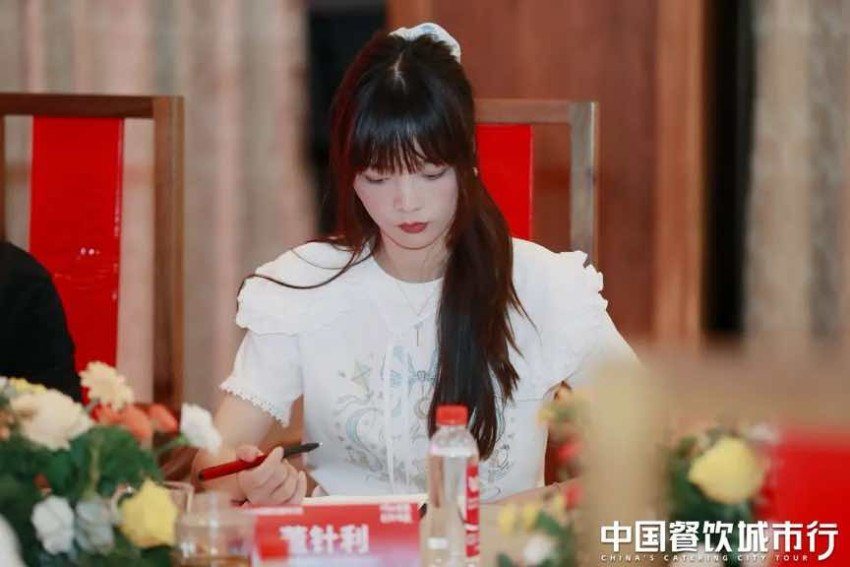
△ Founder of Wutou Chuanxiang, founder of Guangfuji maocai Dong Zhenli
In the market bonus period of 2017 and 2018, the string of fragrant incense at the top of the house seized the opportunity, coupled with clear positioning, focused on building community-based stores, and at the same time achieved delicious food, cleanliness and hygiene, which is an important reason why the brand can span the cycle.
In terms of marketing, Taotou Chuanxiang is good at marketing through customers. "Every day, 80% of customers send a circle of friends to our store to locate our position, which is a bit of a blow to the surrounding community stores, because they are all traditional old stores, single stores and couples stores." Dong Zhenli said.
In addition, some innovative measures, such as handing out edible salt to customers, introducing hairy belly with "lottery tickets" to improve the ordering rate of dishes, and dancing on consumers’ birthdays, were taken.
Shen Sha, general manager of Moby Youchuang, mainly shared several major changes on the roadside in the past two years, emphasizing that only concentration can make innovation.

△ Shen Sha, General Manager of Moby Youchuang
First, from multi-brand to single brand. Shen Sha said that the roadside had achieved the scale of more than 1,000 stores because of dividends, and accumulated the ability of intensification, investment promotion and supply chain. In the past few years, it tried multi-brand development and made barbecue brands and rice noodle brands. In the past two years, it has returned to the familiar string and mala Tang track.
Second, pay attention to direct stores. From 2016 to 2000, there were only 7 or 8 direct stores along the road. Last year, it gradually shifted from franchise to direct sales, and opened 6 or 7 new direct sales stores. Shen Sha believes that only through the creation of direct stores will new things come out.
Thirdly, string innovation is difficult, and it is a very good attempt to introduce oil and halogen strings into stores. At present, in Chengdu, most of the strings are street shops, and the roadside hopes to make innovations in consumption scenes in the future, such as entering shopping centers and building shopping malls.
Besides, Shen Sha mentioned that the roadside also opened overseas stores in Singapore, and adopted the nostalgic style of the 1980s. In its view, Singapore’s catering brands are more presented in a modern way, and roadside stores have a sense of contrast.
Wang Bin, the co-founder of Juhui Cuisine, shared his views on Sichuan cuisine innovation from the perspective of supply chain enterprises, emphasized the importance of Sichuan cuisine characteristics, and put forward the direction of Sichuan cuisine standardization and innovation.
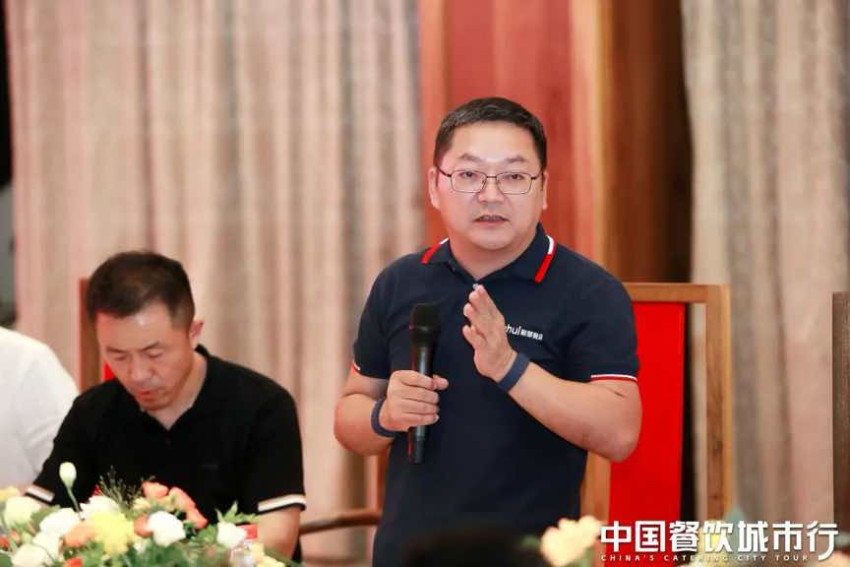
△ Wang Bin, co-founder of Juhui Meal Tune
In its view, Sichuan cuisine is characterized by "three more": more seasonings, more flavors and more ingredients. In addition, the cooking of Sichuan cuisine is the most complicated of all cuisines. These are the main reasons why it is difficult for large-scale Sichuan cuisine brands to develop well.
"When you lay out Sichuan cuisine, you should consider the seasonings, ingredients and cooking clearly. It may be easier to achieve standardization by pushing back the ingredients from the logic of the kitchen and pushing back the taste. " Wang Bin said.
Regarding the innovation of Sichuan cuisine, Wang Bin believes that it should also focus on three dimensions:
First, do a good job in quality and special things. The deeper the effort, the more real barriers can be formed.
Second, innovation comes from efficiency, which is the key to winning the second half of catering.
Third, products are only micro-innovations, and the effect is getting worse and worse. Only by doing the first two innovations well can brands have better development.
02. What role will the Sichuan brand play in the future development of Chinese food?
Although Sichuan cuisine has the largest number of stores in Chinese dinner, the chain rate is not high.
According to Red Meal Big Data, as of June, 2024, Sichuan cuisine brands with fewer than five stores accounted for the highest proportion, reaching 98.8%, while Sichuan cuisine brands with more than 100 stores accounted for only 0.1%. In the future development of Chinese food, the brand of Sichuan cuisine should play a more important role, and it is very important to improve the chain rate.
Mou Jian, the founder of Houchafing dish, analyzed the reasons for the low chain rate of Sichuan cuisine, and put forward the development path that can refer to Hunan cuisine brands.
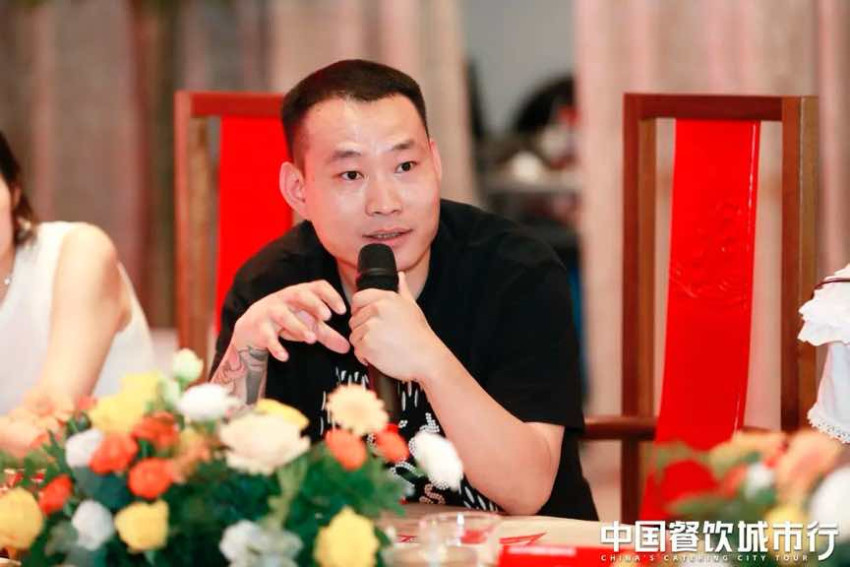
△ After the hot pot founder Jian Jian
Mou Jian believes that the low chain rate of Sichuan cuisine is not because of lack of talents, poor supply chain ecology or urban soil structure, but because Sichuan cuisine is full of flavors and single products are too strong.
In the past, many diners were refining single items to make chains, such as grilled fish, maocai, fish with Chinese sauerkraut, etc. There were not many large Sichuan restaurants like Dongpo in Meizhou. In Mou Jian’s view, Sichuan cuisine can refer to the product structure model of Hunan cuisine brand and tap the representative classic products of Sichuan cuisine for combination, but in the process of adjusting product structure, the "root" and "soul" must be preserved.
For example, in Chengdu, brands such as Diet Brothers and Qiujinchuan Dish Stir-fry have already refined classic products such as Mapo tofu and Sichuan style pork. "In the process of innovation and chain of Sichuan cuisine, we can’t forget its essence. The premise of solving the core model of products is’ innovation does not forget the roots, and Sichuan cuisine is not conservative.’ "MouJian stressed.
Zhang Peilong, a partner of Qiujin Xiongmiao Technology, emphasized the importance of digital and intelligent means to promote the standardization and large-scale development of Sichuan cuisine.
Taking "Autumn Jinchuan Dish Stir-fry" as an example, he pointed out that at present, it improves quality and efficiency through standardization, digitalization and intelligence. Although there are only six or seven direct-selling stores in Chengdu at present, a set of models has been built, which took three or five years.
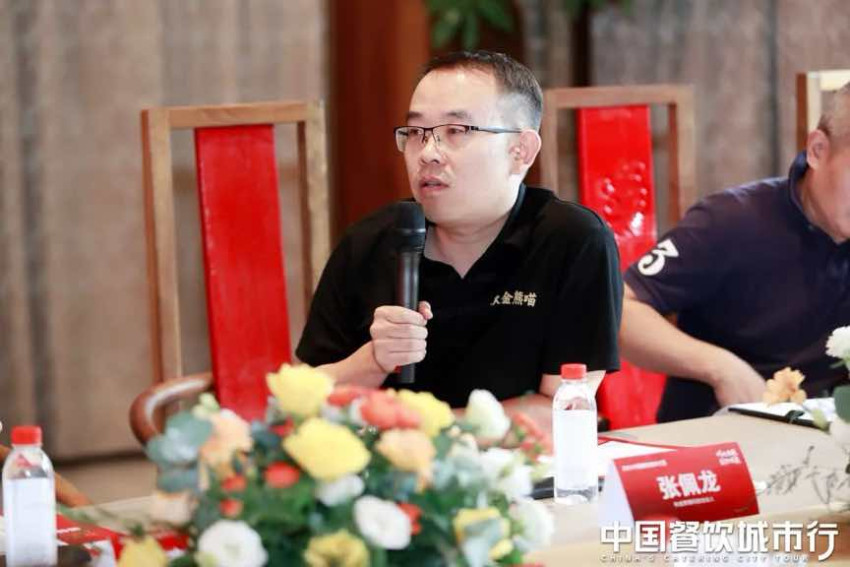
△ Qiu Jin Xiong Wei Technology Partner Zhang Peilong
Zhang Peilong also expressed his willingness to build infrastructure projects for Chinese food brands. That is, by creating a model, the front hall and the back kitchen of the restaurant are linked to help the catering brand solve the problem of improving quality and efficiency. "
"I hope that in the next three to five years, the Sichuan-style snack brand will be promoted throughout the country. At the same time, we also hope that this model can empower Chinese food catering counterparts to create and build together and achieve common progress in the Chinese food industry. " Zhang Peilong said.
Li Yang, the founding partner of Zhu Guangyu Hotpot Restaurant, said that when the supply chain is more coordinated and there are solutions, Sichuan cuisine will get better development in the next few years.For example, the case of autumn Jinchuan vegetable stir-fry is one of many solutions; Chef Fei’s style of play is also one of the solutions.
"Re-stack the capabilities, re-assemble, and reconstruct the cost-performance ratio and quality-price ratio. There is not much problem when Sichuan cuisine comes out. The future of catering people will be very good, and our ability is still strong." Li Yang said.
Li Jiang, the founder of Jibulu Steak and Seafood Buffet, shared his views on how to improve the chain rate of Sichuan cuisine, mainly from the development process and style of his own brand.

△ Li Jiang, founder of Jibulu Steak Seafood Buffet
Li Jiang said that Jibulu Steak and Seafood Buffet had been in operation for 13 years, and had joined the business in the early days, and then turned to direct mode. Jibulu is positioned as a long-term enterprise, opening twenty or thirty new stores every year. In its view, after the store is opened, it should be given time to grow.
He further said, for example, that Jibulu Steak Seafood Buffet was initially positioned as 69 yuan per capita, and after arriving in Chengdu, it was positioned as 79 yuan per capita. Later, it became a relatively high-end brand "Xiting Seafood Buffet", with a per capita price of more than 300 yuan, which was not recognized by consumers and forced to adjust the price. At the most difficult time, it was lowered to 99 yuan, and it lost 12 million yuan at that time. Now the business is basically stable, with a per capita of about 169 yuan, and the profit is ok and the capital is back.
In its view, catering does not mean how much money you must earn this year, but you should do it slowly and take a long-term view.
Li Jiang said that the company was born as a buffet, and then wanted to make the whole industry thorough.
First of all, in brand management, Li Jiang said that in the process of brand management, they never pursue high gross profit margin, but pay attention to providing a better customer experience. When the gross profit margin of stores exceeds 46%-47%, they will take the initiative to come down.
Secondly, in terms of product quality, we ensure the supply of ingredients and product quality through self-built factories, such as making steaks at a ratio of 1:1.
In terms of market expansion, Li Jiang said that by the end of this year, the total number of Xiting seafood self-service stores will reach 40. I went to Haikou and Sanya this year and will March into Inner Mongolia next year. At present, Xiting Seafood Buffet has reached a strategic cooperation with Vientiane Commercial. In the future, Xiting will be opened in places where Vientiane Commercial exists.
In addition, through multi-brand strategy to consolidate the leading position in the buffet industry. Li Jiang revealed that in addition to Jibulu Steak Seafood Buffet, Xiting Seafood Buffet and a Korean barbecue brand, the company also launched a small hot pot brand this year, and has now opened three stores.
"In the future development of Chinese food, Sichuan food should play the role of’ Chinese food boss’." Zhao Shuyong, chairman of Blano Western Restaurant, said bluntly.
He believes that Sichuan cuisine still has great opportunities in terms of market capacity and space. At present, many foreign brands of Sichuan cuisine have developed very well. On the contrary, few brands of Sichuan cuisine in Sichuan and Chongqing have gone out to open stores, and the scale can reach hundreds.
Liu Qiang, founder of Tan Sanniang fresh-cut beef buffet hot pot, also believes that Sichuan cuisine should be the first of the eight major cuisines.At present, the brand development of Sichuan cuisine is not so good. In essence, it is not that Sichuan cuisine is not delicious, and it is not that there are no outstanding talents, because many excellent teams have gone to hot pot. What Sichuan cuisine lacks is a team with strength and understanding of flow. Good products and continuous flow are important reasons for the brand’s popularity.
Liu Qiang revealed that Tan Sanniang plans to enter the field of Sichuan cuisine next year, and the slogan has been thought of, which is called "delicious and not expensive, no longer classic Sichuan flavor". Zhang Mengzhe, the founder of Qianniudao Slag Beef, also agrees that Sichuan cuisine is the first of the eight major cuisines.
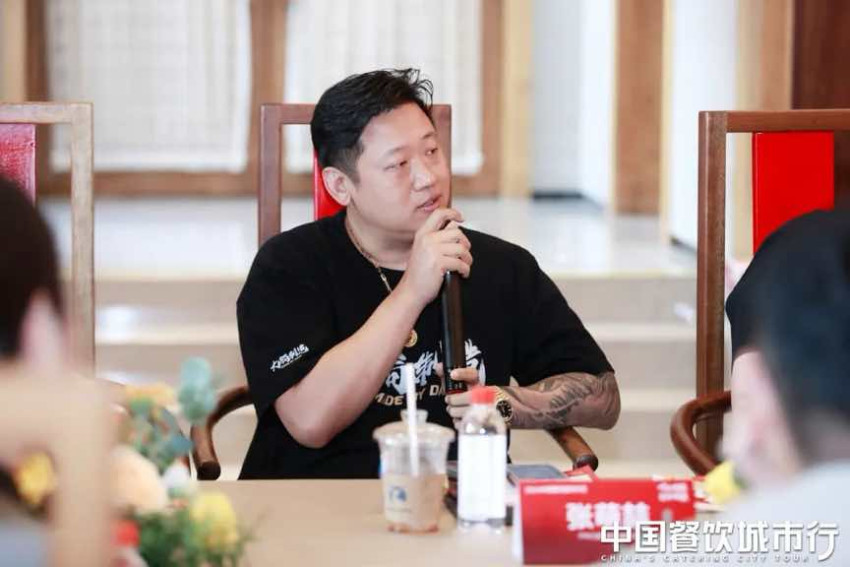
△ Zhang Mengzhen, founder of Qianniudao Slag Beef
In its view, Sichuan cuisine is easily accepted by consumers all over the country and has great development potential in the next decade.
Zhang Mengzhe said that it was also because he saw the market potential of Sichuan cuisine that Qian Niu Dao entered the residue beef track last year. In his view, the residue beef is a traditional specialty food in Qionglai, Chengdu, which has formed a cost-effective customer perception in the market, so it is not necessary to innovate in taste, but in environmental and emotional value.
Wang Bin, co-founder of Juhui Cuisine, said that he firmly supports the development of Sichuan cuisine, and there are three changes worthy of attention in the future:
First of all, from the perspective of development history, Sichuan cuisine is the result of multi-party fusion, with many flavors, but the mainstream flavor of addiction is narrowing;
Secondly, consumers’ tastes are getting heavier and heavier, and only Sichuan cuisine can satisfy everyone’s taste buds.
Finally, from the perspective of consumers’ choice, when people pay more and more attention to taste, not only the taste type, but also the Sichuan cuisine itself will be reduced. The classic dishes preserved in Sichuan cuisine at present will probably be the Chinese food in ten or twenty years.